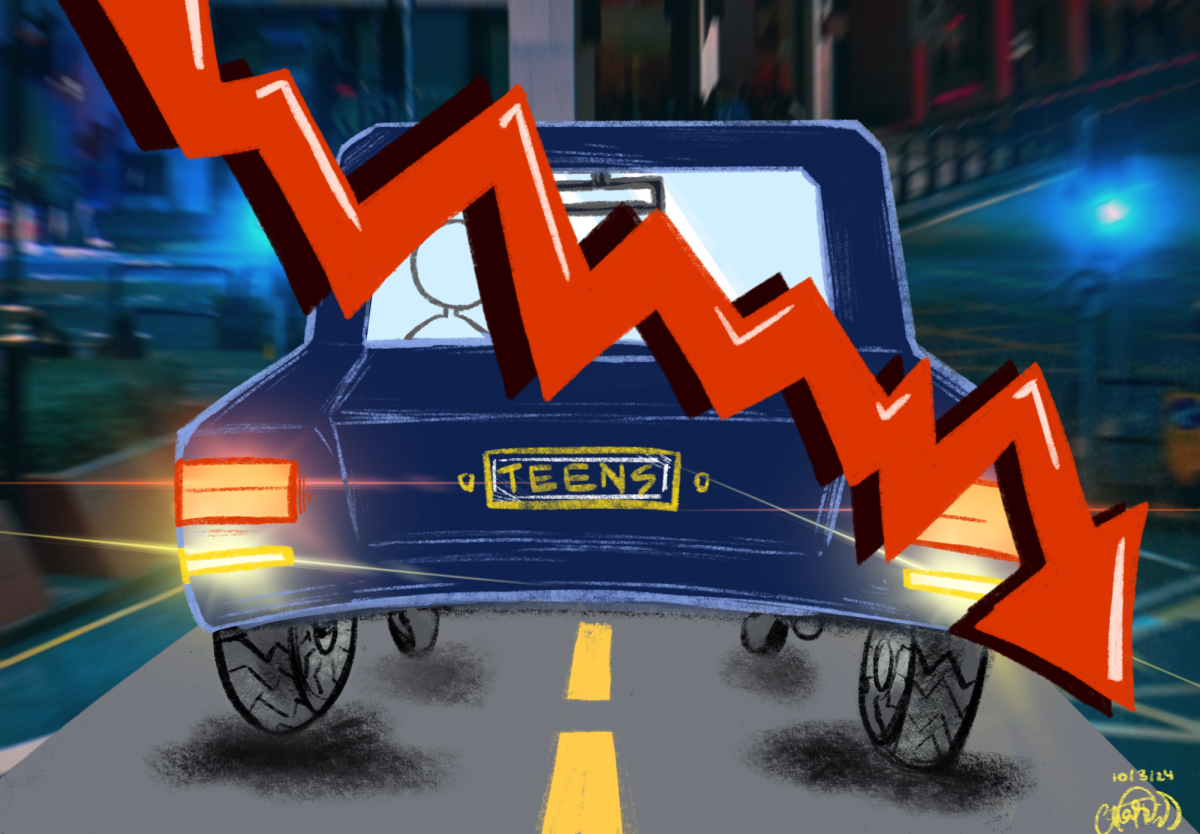The decline in drivers reflects deep societal issues and the continuous changes in the cultural attitudes in today’s world.
A significant factor contributing to the decline in teen drivers is the ongoing inflation of car ownership—including not only the purchase of a vehicle but also expenses like car insurance and fuel.
Across the country, gas prices increased dramatically, even reaching record highs, which can strain budgets and also reconsider young people’s ownership of a car.
“Gas was way cheaper than it is now. I remember when it was below three dollars,” says Jay’sen Morris ’08.
“Cars are a lot more expensive now. Parents used to be able to get quality, cheap cars for teenagers, now I think it’s a lot harder. I feel like everything is more expensive. Gas is more expensive. Insurance is more expensive. I think that the cost for teenagers is way up relative to when I was growing up,” says Danny Curtin ’08.
As these prices continue to escalate, families face difficult decisions financially that often delay car purchases for their teens. This delay causes an impact on their teenagers’ capability to drive and postpones a crucial milestone many view as a step towards adulthood and independence.
“You felt more independent; you felt like you were a little older since you can get around by yourself. And I think now I’ve been hearing kids saying ‘Oh, I am going to wait until I’m eighteen,” says Jay’sen Morris ’08.
Cheyanne Lampkins ’27 adds, “I really want to own a car or learn how to drive just to convenience my family so that they don’t have to drive me everywhere and I can drive on my own.”
Another contributor to the decline in teen drivers is the advancement of technology like many mobile app-based transportation. Innovative solutions through smartphones provide cheaper and immediate alternatives for transportation. Services such as Uber and Lyft have reduced the necessity for teens to drive since the app reliably reserves a ride with the click of a button on a smartphone.
A noticeable trend in recent years suggests there are fewer teenagers getting behind the wheel. Some possible key contributors to the trend include financial burdens, advancements in public transportation, technology, and safety concerns.
Jay’sen Morris ’08 shares his thoughts on why kids don’t have a push to get a license as early, “I think so just because of Uber and like Lyft, we didn’t have that when I was in high school, so I think more kids were more eager to get their license and to drive.”
The option to walk, get a ride from a guardian, carpool, bike, and take public transportation is also readily available for most teens.
“Because we live in San Francisco there isn’t really a need for a car because Muni is free for teenagers and also because the city is filled with many transportation options,” shares Cheyanne Lampkins ’27.
“I have to rely on my family to drive me places and sometimes they aren’t free, which makes planning social events harder.”
The risks of teenagers driving can be a great danger and factor in deciding to get a license. Often teenagers are associated with more car crashes and therefore may restrict their permission to obtain a license.
Madison Avila ’27 says, “Drawbacks are you have to look for parking and you are also liable for accidents, and some benefits are you are able to drive yourself when your parents aren’t able to.”
The decline in the number of teen drivers is a complex issue influenced by various factors. Families and policymakers must take note of this trend, and work toward helpful solutions that will assist in developing teens’ autonomy.
Financial assistance and even educational programs can support teen driving and may even alleviate the decline. For many, a driver’s license represents a crucial milestone towards adulthood, for it brings more responsibility and less dependency. As society adapts to these changes, it is important to ensure that teenagers maintain their opportunities for independence.













